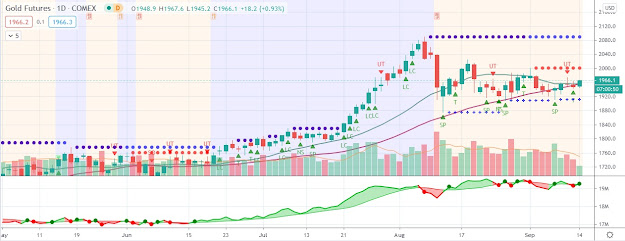Price of gold moved higher following last Friday’s worse than expected U.S. non-farm payrolls report
The gold price began the week on a positive note, advancing $12.37, or 0.8%, to $1,644.27 per ounce Monday morning. The price of gold moved higher following last Friday’s worse than expected U.S. non-farm payrolls report. The latest reading on the state of the U.S. labor market showed job additions in March of only 120,000 – below the 205,000 consensus estimate among economists.
Barclays Capital included commentary in a note to clients that could have bullish implications for the price of gold: “The report had an undeniably weak tone and will raise doubts about the strength of the labour market…While (they) do not believe that this report alone will propel renewed policy action in April, the door to further quantitative easing remains ajar and may shift the decision point to the June FOMC (meeting) as the Fed continues to monitor the incoming data.”
In spite of the recent gold price weakness, James Steel – a precious metals analyst at HSBC – contended that the longer-term outlook for the yellow metal remains favorable. “Policy is already ultra-accommodative by conventional monetary standards and therefore gold-friendly,” Steel wrote in a note to clients. “This may be overlooked or underestimated in the current selloff, we believe.”
The HSBC analyst went on to say that “Although gold prices may soon bottom if macro hedge funds or other investors sense that the market is becoming oversold, we believe that bullion prices [will] rebound only on emerging-market demand or fresh official-sector buying. A gold price drop below $1,600/ounce could attract such buying.”
The gold price could also be swayed by escalating sovereign debt concerns in Europe. Last week European financial markets posted steep losses, particularly in Spain and Italy. Sovereign bond yields in the two nations renewed their advances, as skepticism has risen of late over the ability of policy measures to reign in fiscal deficits.
Barclays Capital included commentary in a note to clients that could have bullish implications for the price of gold: “The report had an undeniably weak tone and will raise doubts about the strength of the labour market…While (they) do not believe that this report alone will propel renewed policy action in April, the door to further quantitative easing remains ajar and may shift the decision point to the June FOMC (meeting) as the Fed continues to monitor the incoming data.”
In spite of the recent gold price weakness, James Steel – a precious metals analyst at HSBC – contended that the longer-term outlook for the yellow metal remains favorable. “Policy is already ultra-accommodative by conventional monetary standards and therefore gold-friendly,” Steel wrote in a note to clients. “This may be overlooked or underestimated in the current selloff, we believe.”
The HSBC analyst went on to say that “Although gold prices may soon bottom if macro hedge funds or other investors sense that the market is becoming oversold, we believe that bullion prices [will] rebound only on emerging-market demand or fresh official-sector buying. A gold price drop below $1,600/ounce could attract such buying.”
The gold price could also be swayed by escalating sovereign debt concerns in Europe. Last week European financial markets posted steep losses, particularly in Spain and Italy. Sovereign bond yields in the two nations renewed their advances, as skepticism has risen of late over the ability of policy measures to reign in fiscal deficits.




Comments
Post a Comment